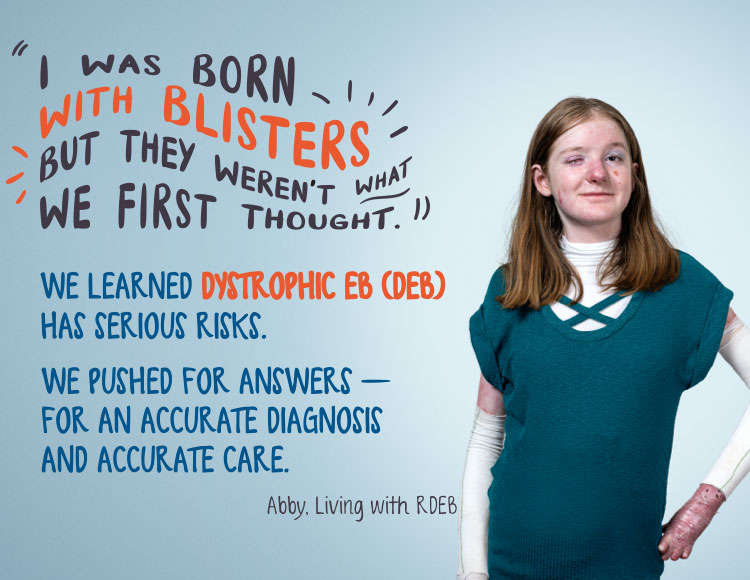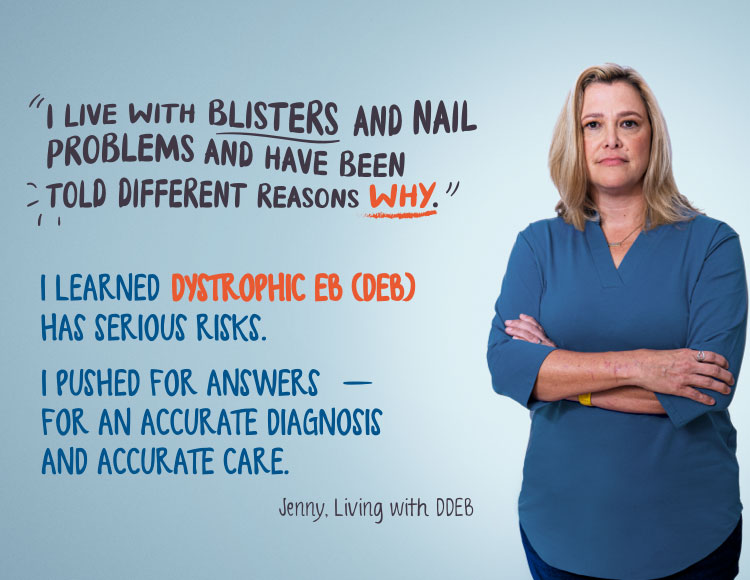Not all blisters are the same. Could yours be DEB? Ask your doctor about a genetic test for DEB.
DEB, or dystrophic epidermolysis bullosa, is a type of epidermolysis bullosa or EB.
It’s a genetic disorder that makes skin fragile. Symptoms can include blisters, wounds, scarring, and nails that can thicken or discolor. It can often be mistaken for other EB types and even other skin conditions, but DEB has serious risks.
You can get proactive care and a clearer view of the future the sooner you learn if your blisters are DEB.
Recognizing DEB
A missed DEB diagnosis can happen if doctors only look at symptoms alone
Accurate Diagnosis Matters
DEB can have serious risks and complications, and accurate diagnosis is the first step to address them
Talk with your doctor about DEB



